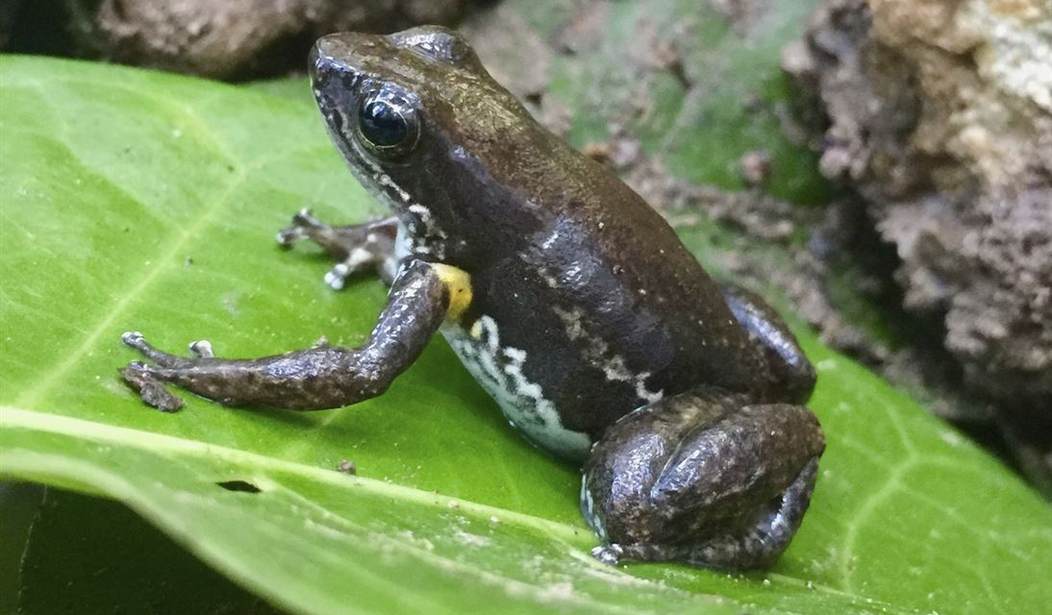Remember the first time you cut into a frog or rat while learning about biology in school? For me, it was one of the most interesting lessons I learned – even though I wasn’t great at cutting in the right places.
Cut me some slack. It isn’t like I ever planned to become a surgeon. These hands were made for writing, not surgery. But I digress.
There has been an ongoing debate over the practice, with entities like People for the Ethical Treatment of Animals (PETA) doing their best to save the frogs. The organization recently released a video touting its K-12 curriculum regarding dissection and arguing in favor of using alternatives to actual animals. However, it appears that this effort is just one of several that PETA has undertaken to inject its warped ideology on animal rights into the classroom.
In the video, Genesis Butler, founder of Youth Climate Save asserts that “animal dissection is bad science. It’s toxic, traumatic, and cruel.”
She insists that “studies have even shown that students interested in science sometimes lose that curiosity after being forced to cut up animals” and that “there are better ways to learn.”
“There are high tech, cruelty free digital dissection programs and even augmented reality tools that can display animals' anatomies without having to kill them. There are also realistic synthetic models that can be dissected much better than cutting up animals soaked in formaldehyde, which is a known carcinogen. More than 10 million animals, including frogs, rats, cats, and fetal pigs are used in cruel classroom dissection every single year. Many of them are snatched from their homes in nature and then gassed or drowned while others are cut out of their mother's womb in the slaughterhouse. Frogs are taken from the wild and killed just for dissection, which disrupts ecosystems and hurts the environment.”
PETA is trying to do away with animal dissection in schools.
— Jeff Charles, An Awful Pundit🏴 (@jeffcharlesjr) March 20, 2024
What say you?
Should students be allowed to dissect frogs, rats, and other animals while learning about biology? pic.twitter.com/o59Bw1MYKW
Butler concludes by explaining that dissecting animals “doesn’t align with our ethics of caring about sentient beings” and that “helping your school switch to humane dissection methods will spare thousands of animals.”
In 2023, PETA put out its TeachKind 2023 dissection pilot program. It’s part of the overall TeachKind curriculum the organization has been pushing in schools as part of an effort to indoctrinate children into the animal rights portion of progressive ideology.
However, there are several problems with PETA’s arguments.
Firstly, dissecting animal specimens provides a tactile experience that is invaluable for students. The textures, colors, and organ placement in real animals cannot be perfectly replicated by digital or synthetic alternatives. Using actual animals offers a more comprehensive understanding of biology.
Indeed, a 2022 Switzerland study found that 83 percent of teachers believe that “dissection is a valuable part of teaching biology in schools.” Even further, about 70 percent disagreed with the notion that “alternatives are just as good as animals or animal parts for teaching biology.”
Secondly, dissection can help students hone their fine motor skills and hand-eye coordination as well.
Many teachers believe the reality conveyed by dissection cannot be matched by alternatives. Virtual simulations cannot showcase abnormalities or variations from one specimen to the next. Overly perfect alternatives cannot compete with the biological surprises of real specimens and the learning opportunities they provide. From manipulating sharp instruments to employing delicate hand-eye coordination, the reality of physically dissecting a specimen can also develop fine motor skills.
The American Psychological Association found that “early exposure of students to such experiences engenders creativity, original thought, critical thinking, and problem-solving skills” and also pointed out that “Students exposed to nonhuman animal research are more likely to develop and retain a better appreciation for such research.”
Lastly, contrary to what PETA’s ilk would argue, animal dissection can foster a deep respect for life and an understanding of ethical considerations in science. By learning more about how biological systems work in animals, it can imbue students with a greater appreciation for humans and animals.
It is also worth noting that a considerable portion of animals used for dissection were already dead before being allocated for this exercise. Letting students dissect them is a better alternative than simply wasting the animal. In fact, Bill Wadd, co-owner of Bio Corp, a company that provides specimens for schools and other institutions, told the Chicago Tribune that over 98 percent of the animals it uses are already dead.
“We just take what people would throw away. Instead of throwing it in the trash, why not have students learn from it,” he said.
PETA’s agenda is clear: They are seeking to influence young minds to buy into their bizarre and misguided ideology regarding animals. This isn’t just about dissection, it is about pushing the idea that animals are somehow equal to humans to the rest of the public. This is why they tried to persuade Jill Biden to use potatoes instead of eggs in the White House’s Easter Egg hunt. It’s why they sought to pressure Oklahoma to put the “Ten Vegan Commandments” in their classrooms.
However, when it comes to dissection, perhaps this is a practice that should be left alone, instead of robbing students of a learning experience to push an agenda.












Join the conversation as a VIP Member